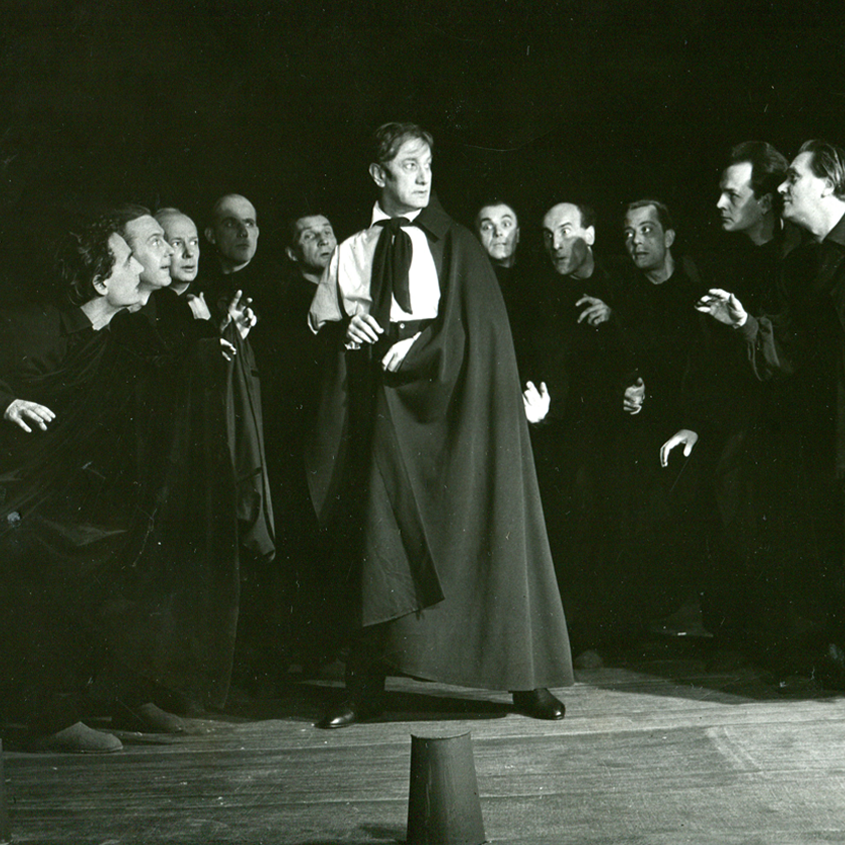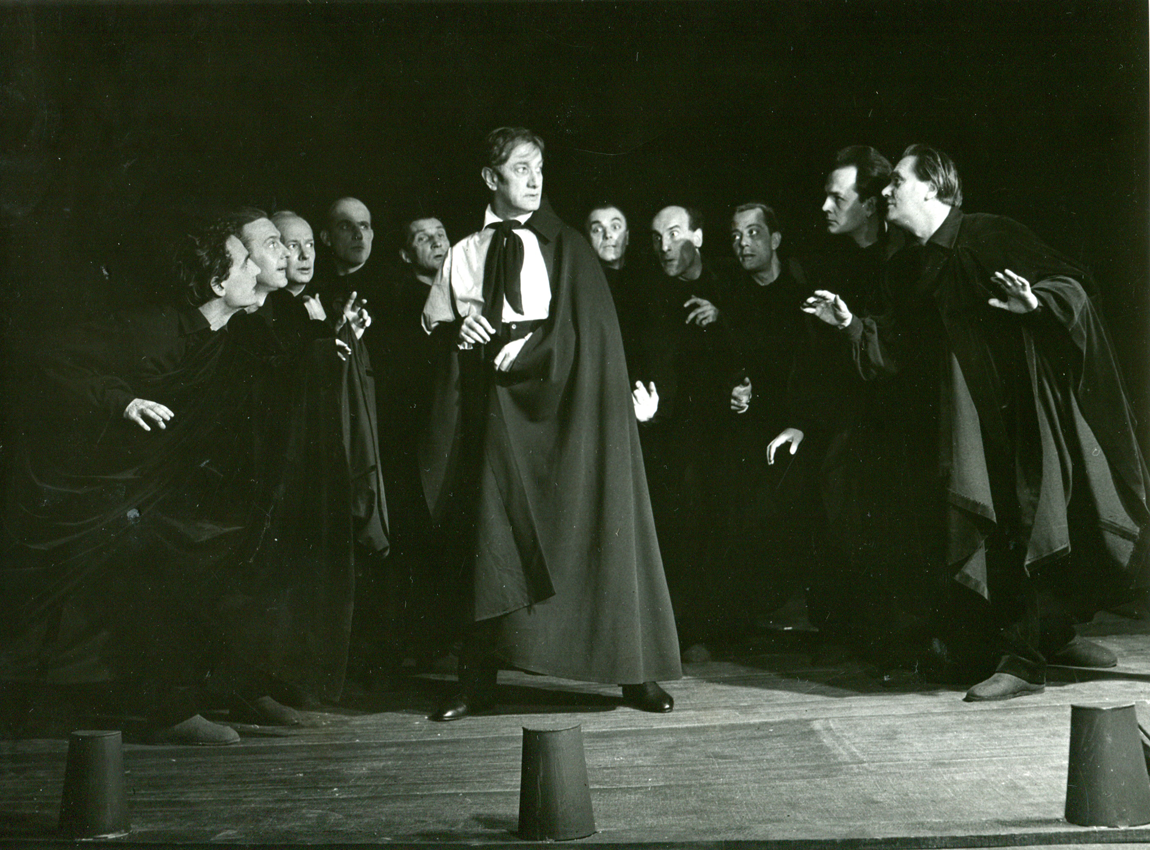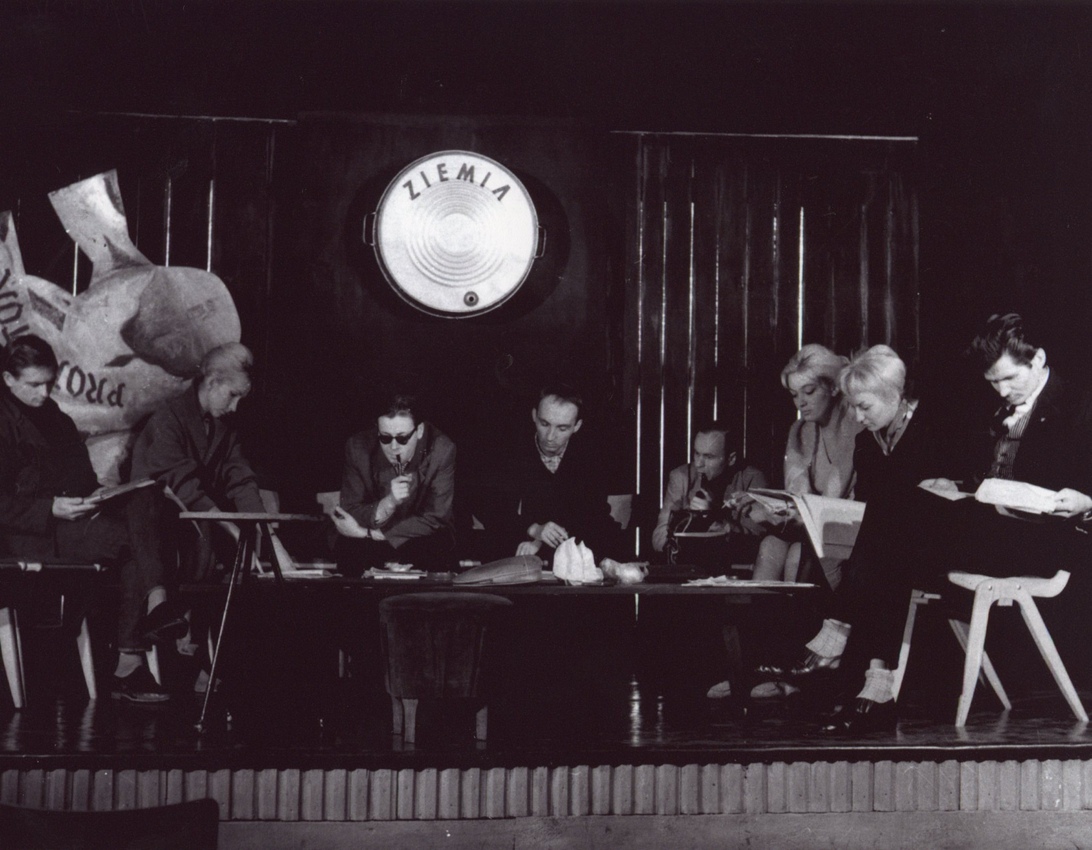The Year of Important Theatre

In my book entitled Polish Theatrums. Histories [Teatra polskie. Historie] there is not a single chapter about public theatre. There are parts devoted to national and political theatre, or rather manners in which Polish theatres and Polish performances participated in the process of constructing and negotiating national identity and in various areas of political life. The lack of a chapter devoted to public theatre does not mean that I do not notice the functions, roles and meanings that we point to talking about that phenomenon nowadays, that is: expanding and strengthening the public sphere, active participation in public debate not only through speaking out on matters that already are its topic, but also by introducing new themes and asking new questions, doubting the obvious, undermining the position of hegemons (whoever they might be), or finally revealing symptoms, signals, tensions and groups that are only looking for their language.
That was exactly the theatre I was writing about in the chapter devoted to Wojciech Bogusławski or the theatre of the “mirror and judgement”. That, however, does not change the fact that the history of public theatre was not present in that book, for which I was reproached for instance by Joanna Krakowska.
In the jubilee year of public theatre, when for various reasons and in various manners I am dealing with the idea of such theatre, understood more broadly than solely as the theatre sponsored from public money, I retell this untold story constantly anew, thus complementing my “Polish theatrums” with one more chapter.
That was besides the idea behind the book, which was not fully understood because maybe it was not explicit enough. Asking in the final sentence: ‘And what is your story?’ I encouraged people not only to say what I had missed out but also to create their narrative on the same material (maybe complemented, maybe diminished). I was not and I am not so proud to think that I told all the stories formed by the living and growing past of Polish performances, constantly created anew. I told the stories that were the closest to me, that seemed the most important to me, hoping that others will be willing to tell their stories (which partially happened). I allowed myself to sit down for a while towards the end, really tired with the work I had done, yet I did not claim that I would sit like that endlessly and not go on any other journey. The year of public theatre and a kind of intellectual commotion that was luckily generated thanks to Maciej Nowak’s idea to use this slogan as a motto for celebrating the 250th anniversary of the opening performance by HM’s Actors, is a great opportunity to once again set off on a journey.
 Liberation [Wyzwolenie], dir. Wilam Horzyca, photo by Franciszek Myszkowski
Liberation [Wyzwolenie], dir. Wilam Horzyca, photo by Franciszek Myszkowski
Let me calm you down: I am not going to write another bloated volume, I even have no intention of describing the outline of any history in this text. I did so, moreover, in a very sketchy, but probably quite expressive manner in the lecture delivered at a meeting of the Senate Committee on Culture entitled How much theatre in the state (soon to appear in print).
There, I pointed out the key elements of the proposed narrative: premiere of The Dismissal of the Greek Envoys [Odprawa posłów greckich] by Jan Kochanowski at the wedding of Jan Zamojski in Jazdów on 12th January 1572, the Enlightenment public theatre of Stanislaus Augustus and Wojciech Bogusławski, civic, not obviously political and culture-shaping Krakow theatre of the second half of the 19th century and the beginning of the 20th century, which culminates in the works of Stanisław Wyspiański, different yet equally strongly socially engaged artistic and program works of Juliusz Osterwa and Leon Schiller, and finally the contemporary theatre which I will, in a simplified manner, call critical.
These are, obviously, just the most important, nodal points. However, already thinking about them, watching them allows you to identify very specific practices, procedures, attitudes and ideas that make up the toolkit, if not the arsenal of public theatre.
In the Senate lecture, I took a closer look at The Dismissal of the Greek Envoys, also drawing inspiration from the theses published some years ago by Claude Backvis, pointing to the relationship of Kochanowski’s tragedy with thinking about the fate of the community and the habit of debating, the core of Polish parliamentarism. Following on along this path, one might add that the Polish public theatrum includes the same parliament and parliamentary debates, which - it seems - gives a completely different, much more positive dimension to stereotypical complaints about the “theatre of politics”. There is nothing wrong with the fact that policy in its public dimension is a dramatic performance. The problem lies in the miserable quality of that show and performances of its actors. This, however, is a different matter, secondary from the perspective of theatricality and drama as important aspects of any public debate.
The art and the institution of theatre do not only use them as a topic and a tool for their performances, but also – as shown in the example of The Dismissal... – use the similarities of mechanisms operating in both spheres to try to influence the course of public debate, also in its most political, decision-making dimension.
An example of a slightly different strategy, originating in the belief that theatre and public life affect each other not only directly, but also in the longer perspective, is the Krakow theatre of the second half of the 19th century. Back then, after the defeat of the January Uprising, a group of conservative politicians who at the same time cared about common good of the citizens, decided to recover the Krakow theatre from its downfall. Count Adam Skrupka became its director and Stanisław Koźmian became its artistic director. This ideologist of Krakow conservatism, co-author of the famous Stańczyk’s Portfolio [Teka Stańczyka] did not treat theatre as a rostrum for his views, did not use it as a tool in ongoing disputes. He himself protested against the attacks of “theatre moralists” wishing to censor the stage. In its free development he saw a long-term culture-shaping process, not solely consisting in “popularizing” outstanding literary works, supporting debutants, raising the level of performance, etc., but all of that simultaneously. Creating theatre on a stable, good level and getting the audience accustomed to it in the long perspective became in a way an onset of social processes facilitating the functioning of the public sphere. Not because the theatre was shaping tastes or educating. But because it made it possible to see the complexity and multifacetedness of reality, it cured from particularisms and the inability to see others’ rights. In my opinion, it is hard to find a better proof of that than the establishment of Stanisław Wyspiański’s theatre nowhere else but in Kraków. In that theatre, as Backvis noticed, the relation between theatre and public debate was practically reaching its peak. It happened not as much in The Wedding [Wesele] (though this drama has many ties to The Dismissal… ), but in Liberation [Wyzwolenie], where once again in the Polish theatre we are dealing with a theatre debate being conducted not only as a dispute between parties with different views but also as a dramatically played out process of thought where the goal is not to convince others about your right but somehow self-check them in a series of confrontations. The two “sides” of Liberation: the “front” of contemporary Poland and the “reverse” of the act with Masks may be looked at as stagings of a futile and fruitful activity in the public sphere. In the first case, the “actors” remain hopelessly and pitifully closed in their roles, presenting solely their views in a series or more or less spectacular shows. In the second case, the main fulfiller, Konrad, remains true to changeability and by fighting and arguing with subsequent opponents he strengthens the awareness of his role and mission. One might even say that the defeat of Konrad lies in the fact that he is the only one who adopted such an active attitude, for whom public theatre is not just an opportunity to show off, but a tool and a space for maturing to become oneself.
 Misterium Buffo, dir. Jerzy Grotowski, photo by Leonard Olejnik
Misterium Buffo, dir. Jerzy Grotowski, photo by Leonard Olejnik
In that manner it is possible and – I think – worthwhile to look at other phenomena that have a much less obvious relation to the public sphere. When thinking and writing about Juliusz Osterwa, I was trying to show the importance and power of the seemingly exotic relationship between what I call the theatre of change, that is the theatre of internal, “spiritual” transformation, with civic theatre. This tradition is present in Wyspiański’s works, yet it is (at least in the case of Osterwa) mostly inspired by Norwid. Nowadays, it seems totally absent both in theatre and in public life, but it was not that long ago, in the times of Solidarność, that it constituted one of the key elements of presence in the public sphere.
At the same crossroads, there is the theatre output of Jerzy Grotowski, not obviously political and entering into the same kind of relations with the public life. The artist is often cited as an emblematic example of a creator focused on the individual and its deep exploration, and he did, after all, create performances constituting specific comments and a counterweight to the phenomena which he saw in public life.
That was undoubtedly the case during the first performances of the Theatre of 13 Rows (most explicitly in Misterium Buffo), but also in the last one, Apocalypsis cum figuris. Not long ago, in a radio programme recorded for the series entitled “Encyclopaedia of Polish Theatre”, Małgorzata Dzieduszycka said that it had been an attack on the Christian structure of our culture, going in its sharpness, ambiguity and intimate severity, going much further than the infamous Golgota Picnic by Rodrigo Garcia. And if one comes to realize that it was being prepared in the aftermath of the events of March 1968, then its alleged metaphysical isolation turns out to be much more problematic.
Of course, I realize that such considerations may in a moment lead to such an extension of the concept of public theatre that it will actually mean almost every, and in any case any socially important Polish theatre. From the point of view of scientific exactitude it would probably be a mistake. But from the point of view of thinking about public theatre it would be a happy mistake, because it would make it possible to explain that in Polish Theatrums ... there is no separate chapter on this theatre because almost every theatre of which I talk there has its own value in the context of public life. What's more, it would become clear why in this jubilee year it is the word “public” that is cited in the first place. From this perspective, “The Year of Public Theatre” could be read as “the year of important theatre”. And that is a different narrative.
Prof. Dariusz Kosiński